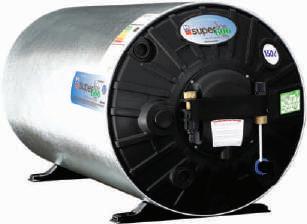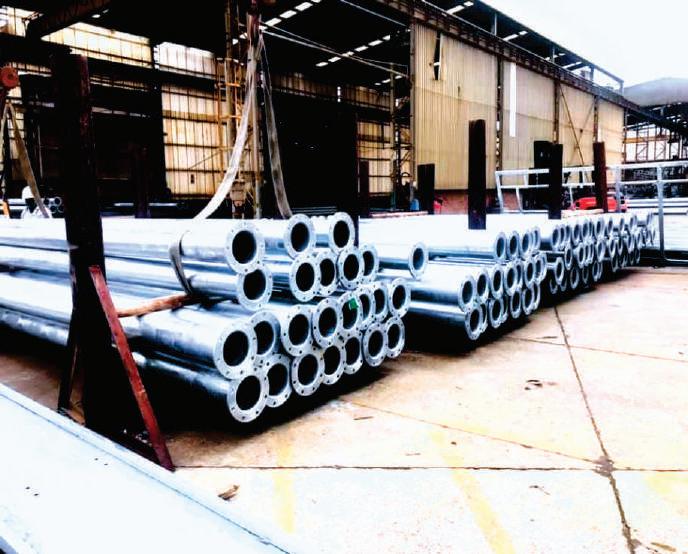
3 minute read
NOORD KAAP TUINE
Kors:
3 eetlepels botter
Advertisement


1 kilogram aartappels

1 eetlepel sout
1 teelepel peper
1 eier
2 eetlepels fyngekapte vars roosmarynblaartjies of 1 eetlepel gedroogde roosmaryn

Vulsel:




500 g blomkool in die blommetjies opgebreek wat in die helfte deurgesny word
500 g broccoli in die blommetjies opgebreek wat in die helfte deurgesny word
2 medium groot uie, in agstes gesny
8 heel babawortels
6 knoffeltoontjies, ongeskil
6 takkies vars tiemie of
1 eetlepel gedroogte tiemie sout en peper na smaak
3 groot eiers
1 koppie room
100 g fetakaas, gekrummel
100 g Cheddarkaas, gerasper
Voer ‘n 23 cm losboom koekpan met foelie of bakpapier uit en smeer met botter of spuit ‘n nie-kleef spuitmiddel daaroor
Skil die aartappels en rasper dit grof. reineer dit baie goed om dit so droog as moontlik te kry. Die beste is om dit in ‘n kombuisdoek te sit en dan uit te draai om soveel vloeistof as moontlik uit te kry

Meng die sout, peper, eiers en roosmaryn deur die aartappels en druk die mengsel dan styf vas in die pan, sodat dit die bodem en kante daarvan bedek. Probeer dit so eweredig as moontlik te kry en sorg dat daar nie gate is nie
Sprei die blomkool, broccoli, uie, wortels, knoffel en tiemie takkies op ‘n bakplaat uit. Drup ‘n paar druppel olyfolie daaroor en geur met die gedroogde tiemie (indien dit gebruik word) asook sout en peper na smaak. Sit dit saam met die kors in die oond en bak by 200ºC vir 30 minute.
Haal die groente na 30 minute uit en laat effens afkoel, maar los die kors vir nog 30 minute in. Druk die knoffel uit die doppies en stroop die blaartjies van die tiemietakkies af. Verwyder die doppies en die takkies. Meng die eier, room en helfte van die cheddar en feta kaas.
Haal die aartappelkors na ‘n uur uit die oond en rangskik die groente daarin. Giet die eiermengsel daaroor en strooi die orige kaas daaroor. Verlaag die oond temperatuur tot 180ºC en bak vir 30 minute. Laat vir 15 minute staan voor die bedien word.
Bron: Facebook /Resep - Adam Cloete Foto: Adam Cloete

The DWS warns communities downstream of Vaal and Orange rivers as water releases are activated to ease dam pressure during heavy rains

The Department of Water and Sanitation is currently implementing its Flood Preparedness Plan to ensure the safety of individuals and infrastructure, to minimise disruption of services, destruction of property and livelihoods due to flooding, and to guarantee that dams are 100% full at the end of the flood season if received rains would have enabled it.

Due to the continuing heavy rains in large parts of the country, many rivers are overflowing, and most dams are full and spilling.The same is occurring in the Vaal and Orange River System.The water level has risen rapidly and made it necessary to open more gates at Vaal Dam. Six (6) had already been opened and an additional four (4) gates were opened today, 17 February 2023 to release more water, bringing the total to ten (10).
As at today, an outflow from Bloemhof Dam was increased from 1 600 cubic metres per second, and further to 1 800 cubic metres per second. Depending on the weather conditions in the next few days and resultant changes in river flow levels, more gates may still be opened, or some may be closed at Vaal Dam.The same applies to outflow from Bloemhof Dam.
Since rainfall and floods are a natural phenomenon and therefore control of the events may be limited, as such people should stay to out of harm’s way by ensuring that they avoid putting essential services and human settlements within parts of the floodplains that are prone to frequent flooding (i.e. within the 1 in 100 year flood line).
Ms Wisane Mavasa, the Spokesperson of the Department of Water and Sanitation calls on the farming communities along the river system to be more vigilant and put measures in place to avoid
of Vaal and Orange Rivers
loss of human lives, livestock and damage to property when water levels rise.
“We appeal to the farmers to be extra careful when the water levels rise, especially along the river system.They should adjust their water pumps, remove livestock and equipment out and away from the riverbanks. We also appeal to the general community to avoid fishing or swimming during heavy rains””, she said.
Ms Mavasa also encouraged communities to harvest rain during this summer rainfalls to augment water supply at their households.
Every year ahead of the high flow summer season rains, the Department develop and implement flood monitoring and forecasting systems, assesses the likelihood of flood incidents and its own preparedness to mitigate the adverse effects of these floods on its infrastructure and guarantee full capacity on its storage reservoirs.All requisite measures are put in place to ensure that the Department will be able manage floods effectively.
All gauging equipment at sites used for flood monitoring are equipped with real-time river and dam level data transmission capability These data are analysed to determine rainfall, river and dam level trends which enable the detection of the possibility and timing of flooding. Some of the dams owned and operated by the Department have built-in additional capacity for limited flood retention and some have gated spillways. These reservoir components make it possible to lessen flood impacts by reducing.The gates make it possible to pre-emptively release water from reservoirs rapidly and there by opening more space to store proportions or entire volume of potentially destructive flood peaks.
For more information, contact Wisane Mavasa, Spokesperson for the Department of Water and Sanitation on 060 561 8935.









